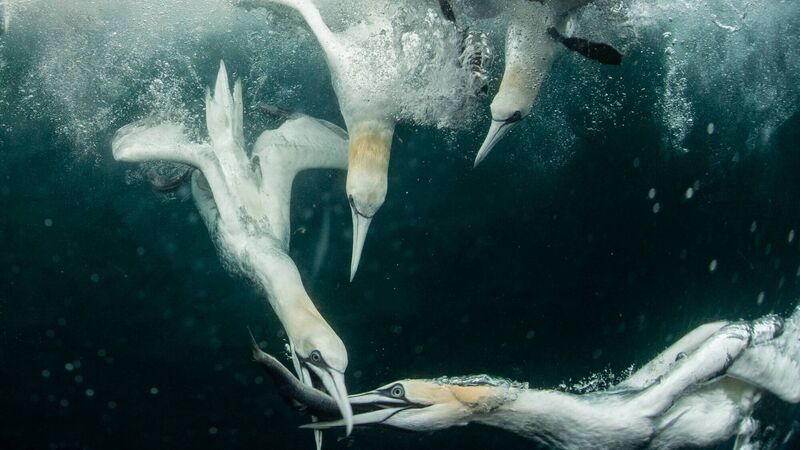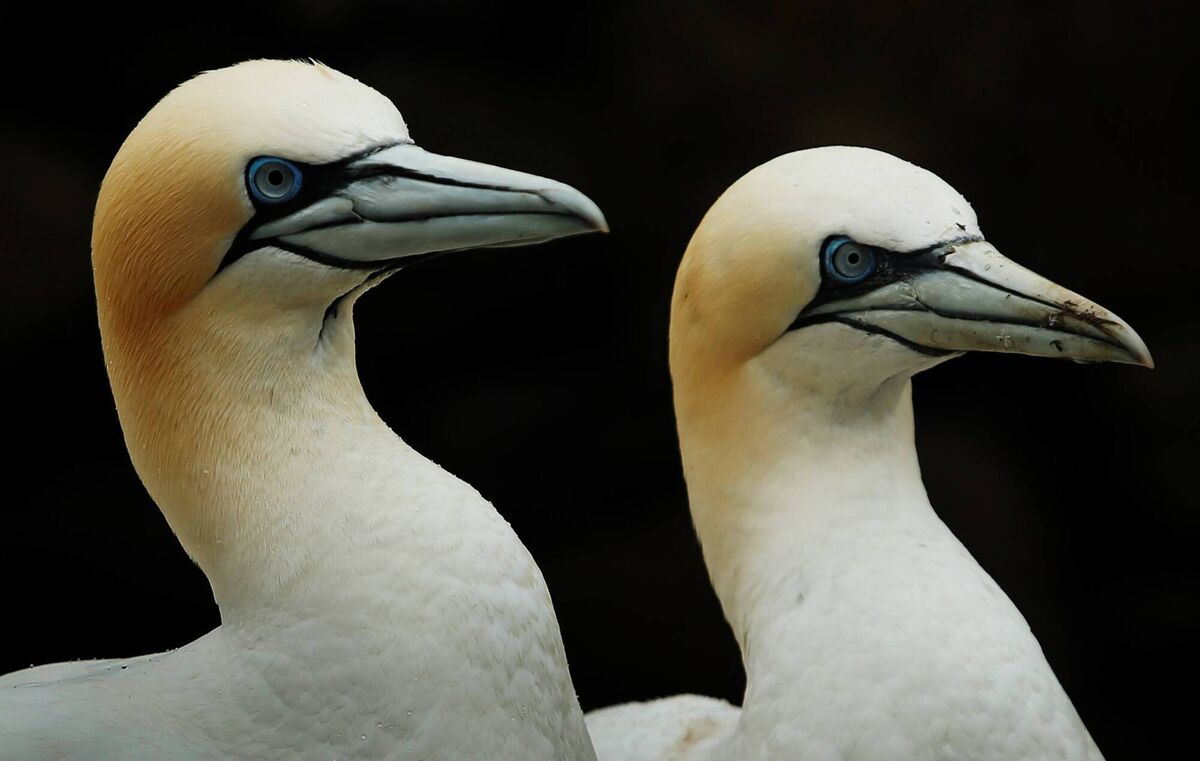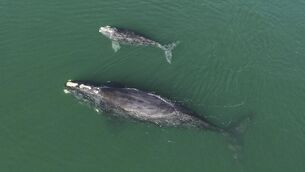Juanita Browne: Visit a seabird colony — they're wildlife wonders

The gannet’s body is specially adapted for diving. Air sacs under the skin of the head and chest protect it like bubble-wrap as it hits the surface of the water at 100kmph. Gannets hunt fish by diving into the sea from a height and pursuing their prey underwater. For this picture, the camera was in an underwater housing lowered into the water as the birds were feeding
In July, our offshore islands and sea cliffs are teeming with life as gannets, puffins, guillemots, razorbills, kittiwakes and gulls raise their young. Visiting a seabird colony, such as Sceilig Bheag, in mid-summer is one of the most amazing wildlife experiences you could have.
In Australia, you ‘have to’ visit Uluru; in the United States, the Grand Canyon; in Canada the Niagara Falls. In Ireland, I believe the Skelligs, off the Kerry coast, is our very own Uluru — a natural phenomenon so breath-taking, it just has to be on your bucket list.
Getting a good weather window for a boat trip to the Skelligs can be difficult, so it’s a relief when the boat departs the small harbour at Portmagee. The journey from Portmagee to the Skelligs, which lie about 12km offshore, takes about 50 minutes, and unfortunately many passengers suffer the effects of these choppy Atlantic waters. But as you approach Little Skellig, you are instantly reassured that it has been well worth any nausea endured. It's very difficult to describe the spectacle that is Little Skellig at the height of summer. As this giant rocky pinnacle comes into view, it seems to be capped in snow along its peaks.
It’s only as you get closer that you can see that the white ‘snow’ effect is actually created by the feathers of tens of thousands of beautiful white birds called gannets, and of course the birds’ guano which bleaches this jagged rock.
The gannet is our largest seabird, with a massive wingspan of two metres. Its long narrow wings are tipped with black and the adults are strikingly white, with just a golden sun-kissed crown of feathers on the head. You may not get close enough to look them in the eye, but do your research online and you’ll be drawn in by their piercing blue eyes.
We were lucky enough to see gannets diving right beside our boat. These massive birds torpedo into the water from 30 metres or more above the surface and hit the water at 100kmph. Pulling their wings back to create a streamlined shape, they are designed perfectly for diving. They quickly resurface holding fish who never stood a chance.
Little Skellig, thankfully, is a protected BirdWatch Ireland Reserve and landing is not permitted. As the boat drifts closer it doesn’t seem possible to land anyway. Gannets seem to take up every inch of flat surface. How the BirdWatch surveyors ever pick their way through nests and protective parents when they have to carry out their counts, I have no idea.
As the boat circles the island on its way to Skellig Michael, it’s the birds circling the rock in the skies above that I find mesmerising. Watching these massive seabirds soar with outstretched wings, in vast airborne orbits around this mountain of rock, reminds me of a scene from some sci-fi film like Avatar or the pterodactyls flying over Jurassic Park, or perhaps it’s the dragons in How to Train your Dragon! Its name of course implies a place that is small (in comparison to Skellig Michael which is about twice its size), but don’t be misled — this isn’t a small rock — its peaks tower 134 metres above sea level.

It's estimated that there are between 25,000 and 35,000 pairs of gannets on Little Skellig in recent summers, along with thousands of chicks and juvenile non-breeding birds too, making it Ireland’s largest gannet colony and one of the largest in the world.
Of course, there are other places you can see gannets around Ireland, including breeding colonies on Great Saltee, County Wexford; the Bull Rock, County Cork; and a small colony on Ireland’s Eye, County Dublin. But if you can, add the Skelligs to your bucket list.
The sound and spectacle of Little Skellig is truly awe-inspiring. Seen by many tourists as a brief stop on route to the real crowd-pleaser of the monastery, where the force awakens, if I were you, I’d beg your boat captain to stall his engine just a little longer at Little Skellig and spend as long as you can in the shadow of this wildlife wonder.
- Juanita Browne has written a number of wildlife books, including and .








